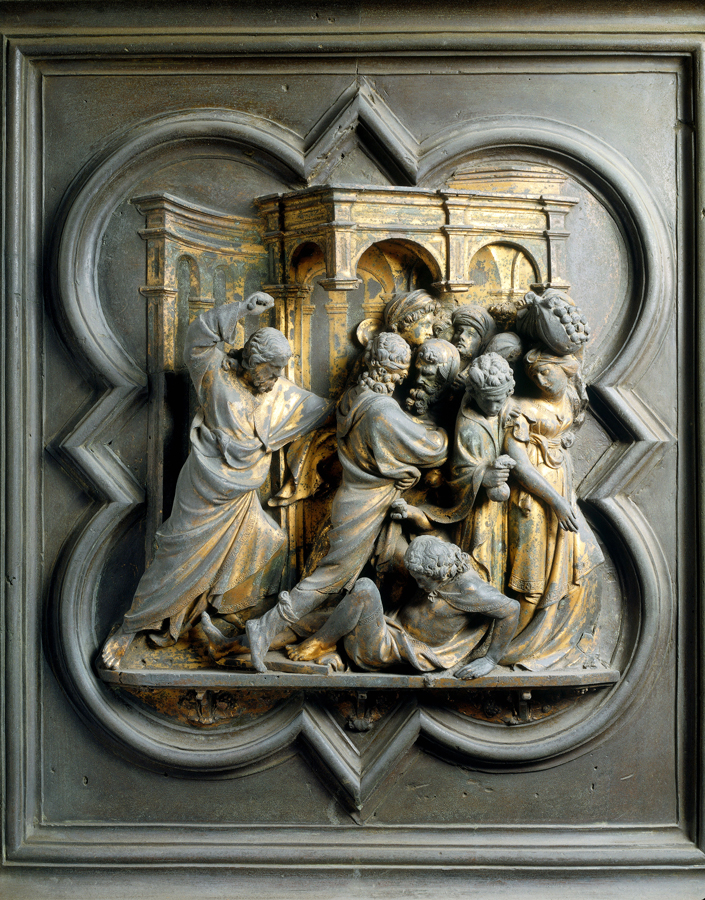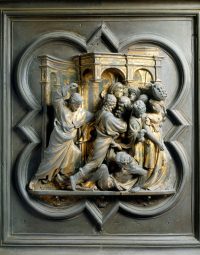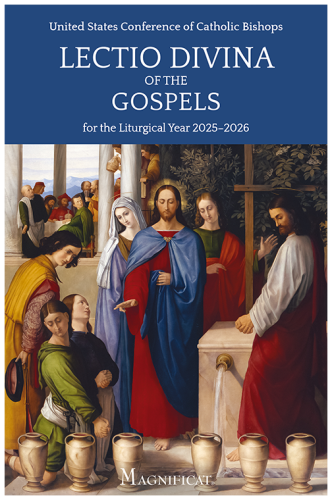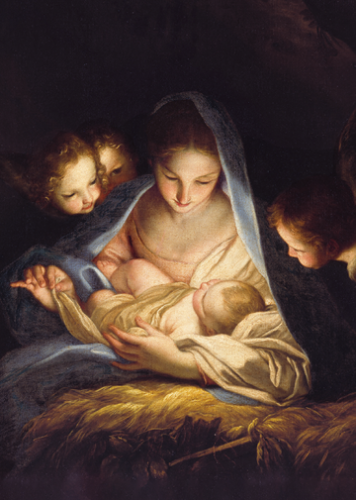Christ Driving the Moneychangers from the Temple,
1403–1424, Lorenzo Ghiberti (and assistants).
Zeal for the house of God
The Gospel of Saint John relates that, at the feast of Passover, Jesus goes up to the Temple of Jerusalem. The Court of the Gentiles at its entrance was a place wherein men and women of every race could be gathered together to worship the God of Israel. There the Jews prepared for their ritual sacrifices, acquiring the necessary provisions for their offerings. But Jesus finds not a place of prayer and devotion: the sacred court has become cluttered with the stands of merchants, religion and commerce mixed in raucous confusion. Jesus reacts with fury. He casts out the moneychangers and tradesmen and restores the Temple court as a place for man to encounter God.
These two realities will forever be in tension, if not in outright conflict: the consuming practicality of worldly responsibility, business, wealth; and the incessant demand of Jesus that we be consumed with zeal for the house of God.
At the crossroads of the holy
and the worldly
In no better place can this dynamic tension be illustrated than in burgeoning 15th-century Florence. The Piazza del Duomo was then, as today, the pulsing nerve center of the city, embracing the masses of citizens, merchants, diplomats, religious, and visitors. Notwithstanding the striking grandeur of the Cathedral of Our Lady of the Flower, the real heart of the City of Lilies was the adjacent Baptistery of Saint John, its eight exterior walls articulated in undulating arcades, and adorned with geometric motifs in Carrara white and serpentine marbles. Saint John the Baptist was the ancient protector of the city—moreover, he was the patron of the Arte della Calimala, the influential and powerful guild of merchants and bankers charged with the upkeep of the baptistery. In a society where the distinction between civic and religious life was more virtual than real, the baptistery signified not only initiation into the Church: the sacraments celebrated therein were also rites of passage for the citizens of the Florentine republic.
The imposing piazza surrounding the cathedral and the baptistery was as complex a space as the Temple court in the Holy City of old. How often was that sacred piazza—that “paradise,” as it was commonly called—merely a stage for the humdrum of profane commerce and worldly politics; a confrontation between the secular and the timeless, the mundane and the heavenly?
At the dawn of the 1400s, this magnificent piazza became the setting for a watershed moment in the history of western art. After the calamitous plagues, wars, and financial ruin that marred the achievements of the previous century, a cultural renaissance promised to bring with it an age of prosperity. In this season of hope, the Arte della Calimala determined to embellish the baptistery as a symbol of the new life—and new wealth—that awaited Florence. On the south side of the baptistery, a set of bronze doors depicting the life of Saint John the Baptist had already been created by the masterful Tuscan sculptor Andrea Pisano (1330–1336). Now the time was ripe to complete the principal doors of the baptistery on the east side, opening toward the facing cathedral, illustrating the life of Christ. A contest was organized to determine the artisan who would be charged with this commission, daunting on account of its artistic demands and technical challenges. The laurels fell at the feet of Lorenzo Ghiberti (c. 1378–1455), who, despite being a youth of merely twenty-five years, had proved himself already a master of narrative language and elegant design. Thus began, in 1403, a project that would engage young Ghiberti (and a host of assistants) for the next twenty-one years, and elevate him to international renown.
A spiritual lesson cast in bronze
The bronze doors completed in 1424 (which were later moved to the north side of the baptistery to accommodate Ghiberti’s celebrated doors depicting scenes of the Old Testament) feature twenty-eight panels. With two lower registers illustrating the four Evangelists and the four great Western Fathers as a theological foundation, the remaining twenty scenes of the north doors progress upwards, leading the viewer in a visual and spiritual ascent in contemplation of the life of Christ from his Nativity to his Ascension.
Our attention here turns to one of the most impressive panels in the program—the Cleansing of the Temple. Set within a convincingly described arcaded loggia, the commanding movement of Christ dominates the scene. Jesus raises his fist in indignation, his furious gesture extending beyond the surface of the panel. With his left hand he shoves the crowd of merchants and tradesmen in an act of brute force. The ensuing snarl of figures forms a compact mass that nevertheless coalesces in an elegant display of graceful drapery, twisting torsos, and frightened glances glimmering in gold. The merchants press upon the woman at the far right, laden with her bundle and at the point of collapsing in the onslaught. Behind her, one of the moneychangers desperately clutches his purse—but his arm reaches outward, as though he might drop his precious treasure and send it cascading into the viewer’s space. A young man, whose foot is ensnared by a broken plank, has fallen in the frenzy: His lithe and supple body, poised precariously on the brink of the panel, risks being trampled in the stampede. The scene is filled with tension and energy, the figures barely contained within the quatrefoil frame; and the viewer is left with the unsettling sensation that he or she is part of this tumultuous event. And, in a sense, we are. In the midst of the affairs of our worldly lives, and in our efforts for success, esteem, and honor, how is Christ giving impulse to cleanse our hearts? How, as citizens of this world and members of the kingdom of heaven, do we zealously strive for the things of God? These very questions, first posed by Christ when he purified the Temple in his own flesh and blood, confront the viewer who beholds this dramatic scene, described by Ghiberti with such passion in gilded bronze.
Father Garrett Ahlers
Priest and scholar of Church history.
Christ Driving the Moneychangers from the Temple, 1403–1424, Lorenzo Ghiberti (and assistants),
Museo dell’Opera del Duomo, Florence, Italy. © Photo Scala, Florence, Dist. RMN-GP / image Scala.













Additional art commentaries